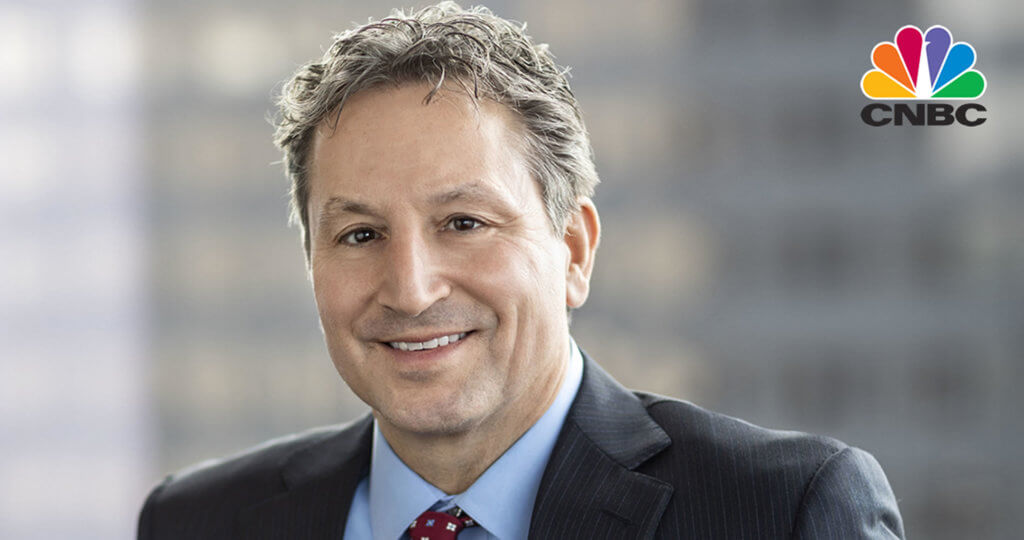Oakmark Equity and Income Fund – Investor Class
Average Annual Total Returns 12/31/21
Since Inception 11/01/95 10.27%
10-year 9.76%
5-year 10.58%
1-year 21.55%
3-month 3.59%
Gross Expense Ratio: 0.86%
Net Expense Ratio: 0.84%
Expense ratios are based on estimated amounts for the current fiscal year; actual expenses may vary.
The net expense ratio reflects a contractual advisory fee waiver agreement through January 27, 2022.
Past performance is no guarantee of future results. The performance data quoted represents past performance. Current performance may be lower or higher than the performance data quoted. The investment return and principal value vary so that an investor’s shares when redeemed may be worth more or less than the original cost. To obtain the most recent month-end performance data, view it here.
“A ship is always safe at shore, but that is not what it is built for.”
– Albert Einstein
Several shareholders have asked about the increase in volatility of the Fund’s share price and if it is being managed differently. Throughout the Fund’s history, it has always been managed to maximize the risk/reward of the portfolio based on the current and expected market conditions. This means that the Fund’s composition changes over time. Some recent composition changes have increased the Fund’s volatility. We understand that this can cause some investors to worry, but we strongly believe that these are the right actions, given today’s market conditions, and that our shareholders will be handsomely rewarded over time.
One way to change the composition of the Fund is by varying its equity weighting. The prospectus allows for that weighting to vary from 40% of the Fund up to a maximum of 75% of the Fund. The equity weighting is usually fairly close to 60%, but it does vary at market extremes. Leading up to the financial crisis, the weighting briefly dropped below 50% as we were wary of equity valuations and the economic environment. During 2020 and parts of 2021, the equity weighting approached and even exceeded 70% when we thought that equities were unusually attractive versus bonds. As equity prices rose, we sold some of those holdings, and the Fund’s current equity percentage is around 64%. Although the decision to overweight equities contributed to the Fund’s strong returns, it also increased its volatility since stocks are more volatile than fixed income and cash.
We can also adjust the risk/reward of the Fund by changing the nature of our equity holdings. The Fund has always employed a value investing strategy. For us, this means selecting stocks that we believe are trading at significant discounts to our estimates of their intrinsic values. After over a decade of outperformance of growth stocks versus value stocks, today we believe that value stocks are especially attractive. Many of the stocks that we currently find compelling are financials and other economically sensitive stocks. These stocks have been quite volatile over the past few years due to worries about Covid-19 and low interest rates. We believe that these stocks’ low valuations more than compensate us for their volatility and economic risks. The Fund also has a multi-cap equity mandate. As large caps have outperformed mid-small cap stocks this decade, our analysts have found many interesting opportunities in the mid-small cap space—a significant number of which have entered the portfolio. However, small-cap stocks are also more volatile than the S&P 500 and have increased the Fund’s volatility.
Another way we change the composition of the Fund is by varying the duration of the fixed income portfolio. Duration measures the portfolio’s price sensitivity to interest rate changes. With real interest rates at historic lows, we have kept the duration of the fixed income portfolio around 2.6 years—much shorter than many other balanced funds and the Bloomberg Barclays U.S. Aggregate Bond Index, which is around 6.7 years duration. This short duration does reduce the volatility of the fixed income portfolio, but it also limits some of the dampening effects that fixed income can have on volatility. This dampening effect is due to equities and fixed income returns being inversely correlated. This is especially true during times of equity market turmoil as interest rates typically decline, which in turn boosts long-dated Treasury prices. In our view, this short duration is prudent since we believe that interest rates will increase and that holding long-dated Treasurys at historically negative real interest rates is unattractive, even considering the downside protection they afford.
All of the actions above have increased the Fund’s volatility versus peers and the index. We do not believe that these actions have increased the Fund’s risk as we believe that volatility and risk are quite different. Volatility measures the price changes of a fund or security over time. We welcome volatility because it often allows us to buy stocks at large discounts to our estimates of their intrinsic values. To us, risk is the permanent loss of capital. We do not believe any of the actions described above increase risk; in fact, we believe that all these actions make the risk/reward of the portfolio more attractive.
For much of the Fund’s history, it was less volatile than it is now and less volatile than the Lipper Balanced Fund Index and its peer group. Over time, we would not be surprised if the Fund becomes less volatile again. We have already lowered the equity percentage as equities have rallied and some of the portfolio holdings approached sell targets. Although we still have an overweight to financials and economically sensitive stocks, we have trimmed some of these positions as they have benefited from the improving economy. Also, it is very possible that the recent elevated volatility for many of these stocks could subside as economic conditions change and the pandemic becomes more endemic. Lastly, the Federal Reserve Board has been very explicit that it plans on raising the federal funds rate in 2022. Once the current fears about the Omicron variant subside, we expect the market to heed this warning, and interest rates will start to increase. If and when rates do increase, we would expect to increase the Fund’s duration.
We are cognizant that this increased volatility can make it more difficult for our investors to hold the Fund throughout cycles. This is why we have always strived to produce timely and clear investor communications. We want all our investors to understand exactly how and why the Fund is positioned like it is. Hopefully, this will allow our investors to withstand the current elevated volatility and prosper if the market conditions unfold as we believe they will.
Quarter and Calendar Year Review
The Oakmark Equity and Income Fund increased 3.6% in the fourth quarter, compared to a 4.5% increase for the Lipper Balanced Fund Index. For the year, the Fund is up 21.6%, compared to a 13.2% gain for the Lipper Index. Since its inception in 1995, the Fund’s compounded annual rate of return is 10.3%, while the Lipper Index’s return is 7.5%. The strong performance for the year was mainly due to strong security selection in the health care, industrial, communication services and energy sectors. The Fund lagged behind its peers during the quarter due to our underweight to technology and the underperformance of some of the cyclical and financial stocks in the portfolio. Even with the strong year of performance, this was another year where the Russell 1000 Growth Index outperformed the Russell 1000 Value Index, which is usually a headwind to the Fund’s performance.
The largest contributors to the portfolio’s return in the quarter were CVS Health, TE Connectivity, Alphabet, Carlisle and General Motors. The largest detractors were Citigroup, Charter Communications, Thor, Ally Financial and Comcast. Top contributors for the year were Alphabet, Bank of America, General Motors, CVS Health and TE Connectivity. The only stocks that were down for the year were Zimmer Biomet, Reinsurance Group, Comcast and Charter Communications.
Transactions
We added two new positions in the quarter. Global Payments is a leading provider of merchant acquiring and issuer processing solutions to both merchants and financial institutions around the world. The company was early to recognize that integrating payments solutions within its business management software applications would drive higher switching costs, lower customer churn and better merchant acquiring economics. The stock had historically traded at a meaningful premium to the S&P 500 Index, but recent fears of competitive encroachment from newer, faster growing payment companies have caused the company’s earnings multiple to compress significantly. Given management’s medium-term expectations of low double-digit revenue growth and high-teens EPS growth, we believe that Global Payments is much healthier and more valuable than its 13x forward P/E multiple suggests. Furthermore, the company expects to generate nearly 40% of its market capitalization in cumulative free cash flow by 2025, which we expect management to allocate smartly to further enhance per share value.
The second new purchase was KAR Auction Services. KAR Auction Services is a leading used car auction company, facilitating millions of transactions each year from its 74 physical auction lots and collection of online marketplaces. This industry has historically been a near duopoly between KAR and industry leader Manheim (owned by Cox Enterprises), who together account for an estimated 70-75% share of “whole car” auction volumes. As is the case in many marketplace businesses, network effects confer a meaningful competitive advantage, making for a durable, high-return business for incumbent leaders. While we believe KAR is a high-quality business, the stock has fallen out of favor lately due to a combination of declining auction volumes and investors’ concerns about upstart digital competitors. In our view, the current volume weakness is cyclical—driven by an unusual backdrop of extraordinarily tight used vehicle supply, historically high prices and fewer than normal repossessions—and we expect volumes to rebound to close to a pre-pandemic level over time. And while we don’t take the threat of digital disruption lightly, we believe management has taken the right actions to prepare KAR for a digital future, which has included acquiring three large digital-native auction businesses over the past several years. We think the used car auction industry will continue to gravitate toward an oligopolistic structure, and we believe KAR has the right combination of technology, customer relationships and service capabilities to be one of the winners, regardless of how the industry evolves. With the stock trading for less than 10x our estimate of mid-cycle earnings power, we find KAR to be significantly undervalued with an attractive risk-reward profile.
We did not eliminate any positions during the quarter, but we did trim numerous positions that were approaching fair value due to rising stock prices.
We would like to thank our fellow shareholders for their investment in the Fund, and we welcome any questions or comments.
The securities mentioned above comprise the following preliminary percentages of the Oakmark Equity and Income Fund’s total net assets as of 12/31/21: Ally Financial 2.8%, Alphabet Cl A 4.3%, Bank of America 3.2%, Carlisle 2.0%, Charter Communications Cl A 2.3%, Citigroup 1.9%, Comcast Cl A 1.1%, CVS Health 3.0%, General Motors 3.3%, Global Payments 1.2%, KAR Auction Services 0.2%, Manheim 0%, Reinsurance Group 1.8%, TE Connectivity 3.0%, Thor Industries 1.1% and Zimmer Biomet 0.4%. Portfolio holdings are subject to change without notice and are not intended as recommendations of individual stocks.
The S&P 500 Total Return Index is a float-adjusted, capitalization-weighted index of 500 U.S. large-capitalization stocks representing all major industries. It is a widely recognized index of broad, U.S. equity market performance. Returns reflect the reinvestment of dividends. This index is unmanaged and investors cannot invest directly in this index.
The Lipper Balanced Fund Index measures the equal-weighted performance of the 30 largest U.S. balanced funds as defined by Lipper. This index is unmanaged and investors cannot invest directly in this index.
The Russell 1000® Value Index measures the performance of the large-cap value segment of the U.S. equity universe. It includes those Russell 1000® companies with lower price-to-book ratios and lower expected growth values. This index is unmanaged and investors cannot invest directly in this index.
The Russell 1000® Growth Index measures the performance of the large-cap growth segment of the U.S. equity universe. It includes those Russell 1000® companies with higher price-to-book ratios and higher forecasted growth values. This index is unmanaged and investors cannot invest directly in this index.
EPS refers to Earnings Per Share and is calculated by dividing total earnings by the number of shares outstanding.
The price to earnings ratio (“P/E”) compares a company’s current share price to its per-share earnings. It may also be known as the “price multiple” or “earnings multiple”, and gives a general indication of how expensive or cheap a stock is. Investors should not base investment decisions on any single attribute or characteristic data point.
The compound return is the rate of return, usually expressed as a percentage that represents the cumulative effect that a series of gains or losses has on an original amount of capital over a period of time. Compound returns are usually expressed in annual terms, meaning that the percentage number that is reported represents the annualized rate at which capital has compounded over time.
The Fund invests in medium- and lower-quality debt securities that have higher yield potential but present greater investment and credit risk than higher-quality securities, which may result in greater share price volatility. An economic downturn could severely disrupt the market in medium or lower grade debt securities and adversely affect the value of outstanding bonds and the ability of the issuers to repay principal and interest.
The Oakmark Equity and Income Fund’s portfolio tends to be invested in a relatively small number of stocks. As a result, the appreciation or depreciation of any one security held by the Fund will have a greater impact on the Fund’s net asset value than it would if the Fund invested in a larger number of securities. Although that strategy has the potential to generate attractive returns over time, it also increases the Fund’s volatility.
The information, data, analyses, and opinions presented herein (including current investment themes, the portfolio managers’ research and investment process, and portfolio characteristics) are for informational purposes only and represent the investments and views of the portfolio managers and Harris Associates L.P. as of the date written and are subject to change and may change based on market and other conditions and without notice. This content is not a recommendation of or an offer to buy or sell a security and is not warranted to be correct, complete or accurate.
Certain comments herein are based on current expectations and are considered “forward-looking statements”. These forward looking statements reflect assumptions and analyses made by the portfolio managers and Harris Associates L.P. based on their experience and perception of historical trends, current conditions, expected future developments, and other factors they believe are relevant. Actual future results are subject to a number of investment and other risks and may prove to be different from expectations. Readers are cautioned not to place undue reliance on the forward-looking statements.
All information provided is as of 12/31/2021 unless otherwise specified.







